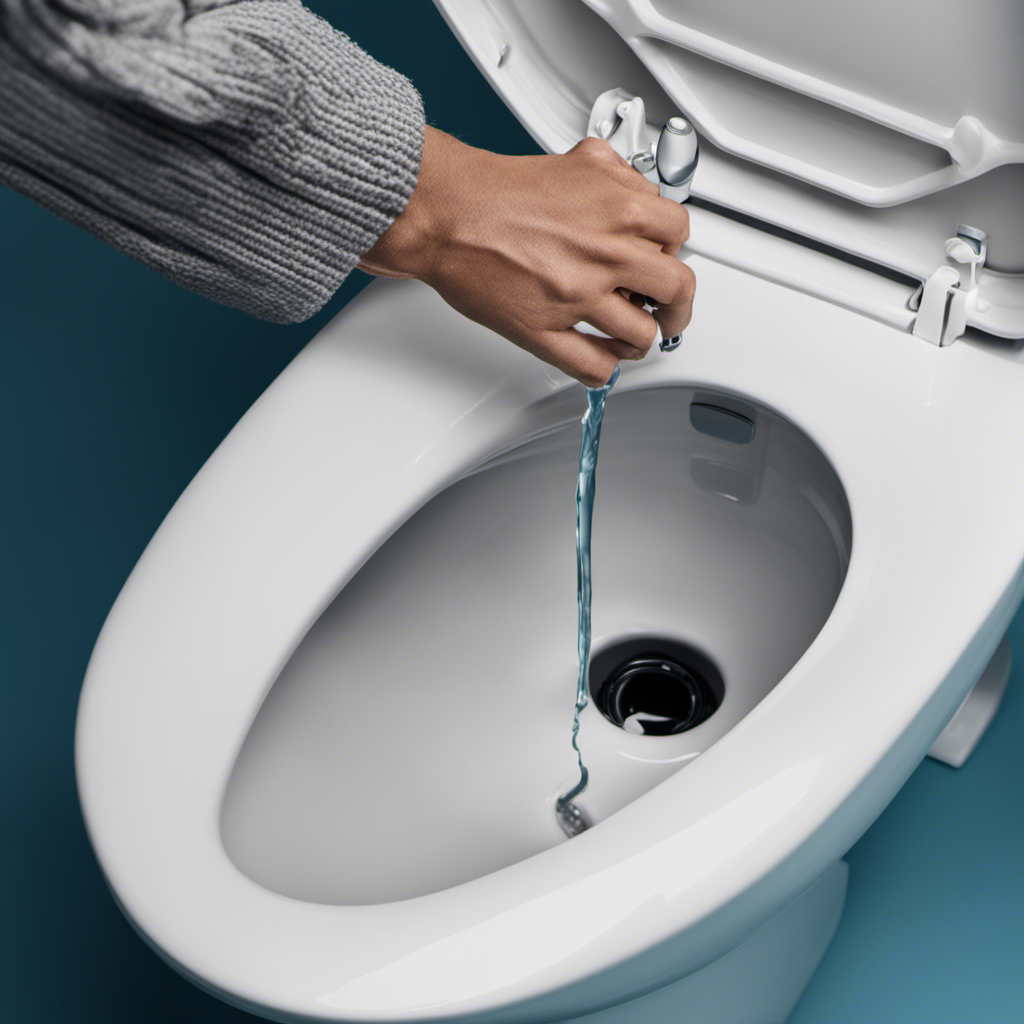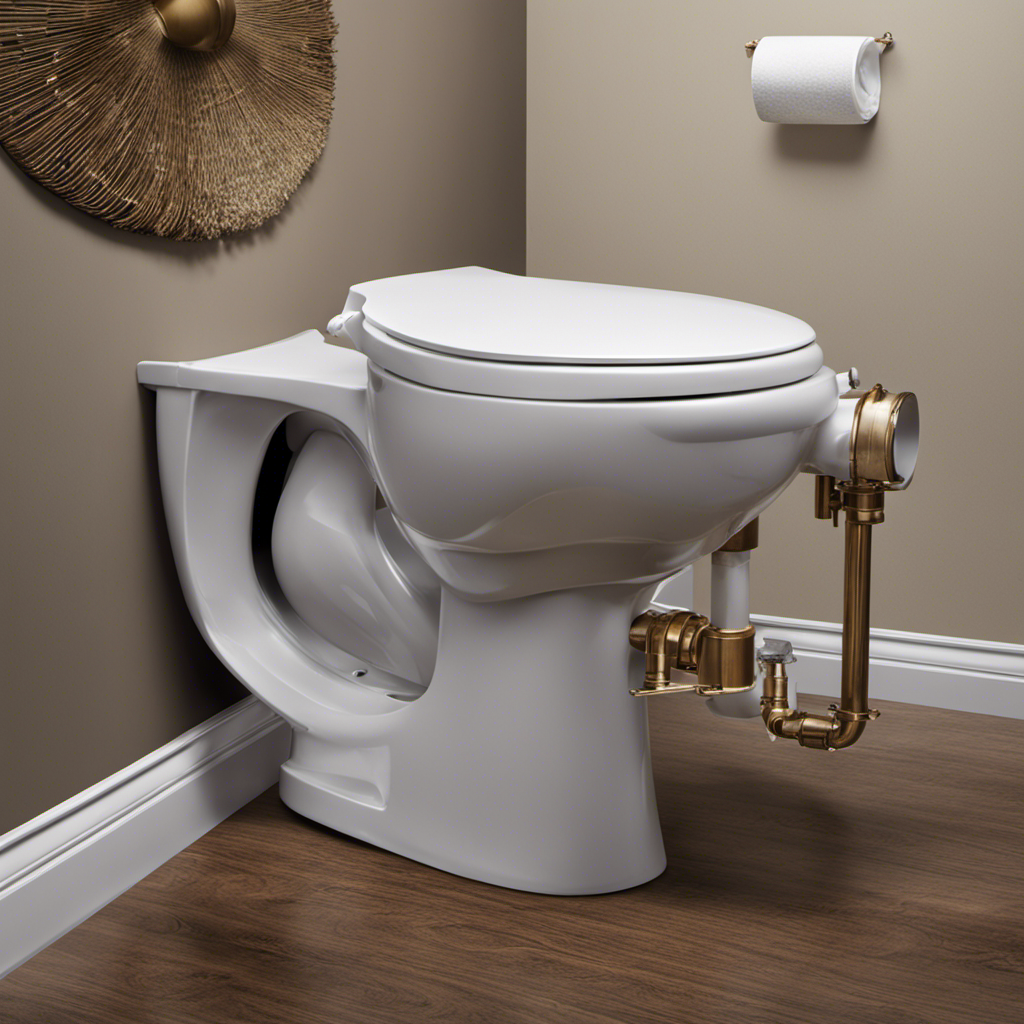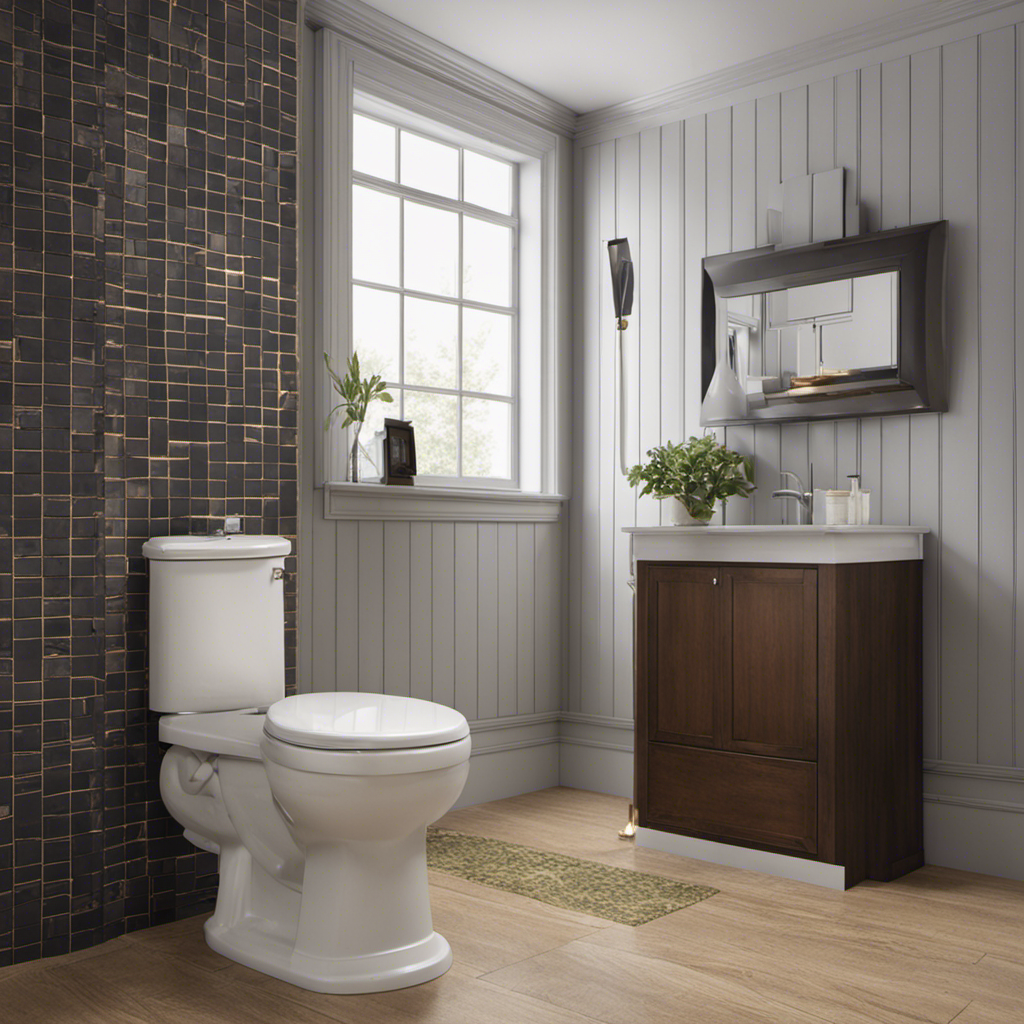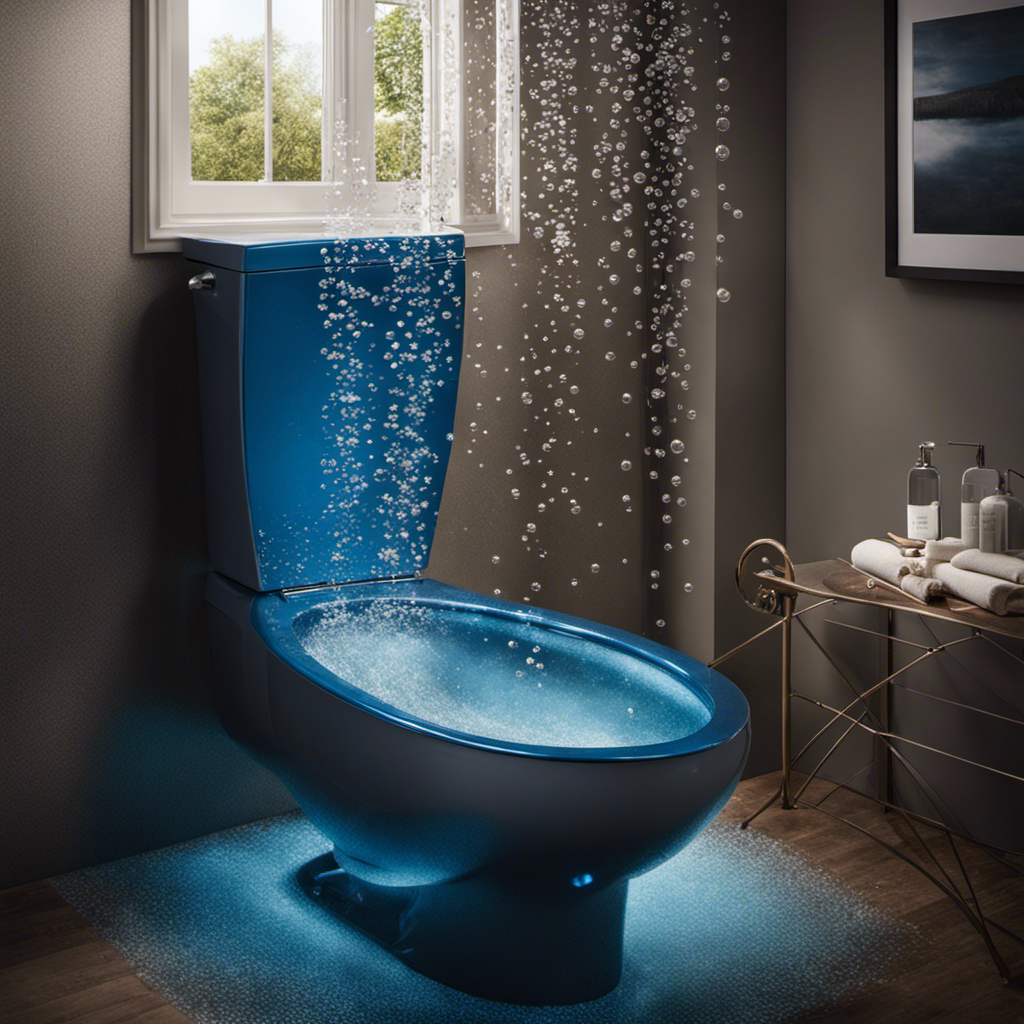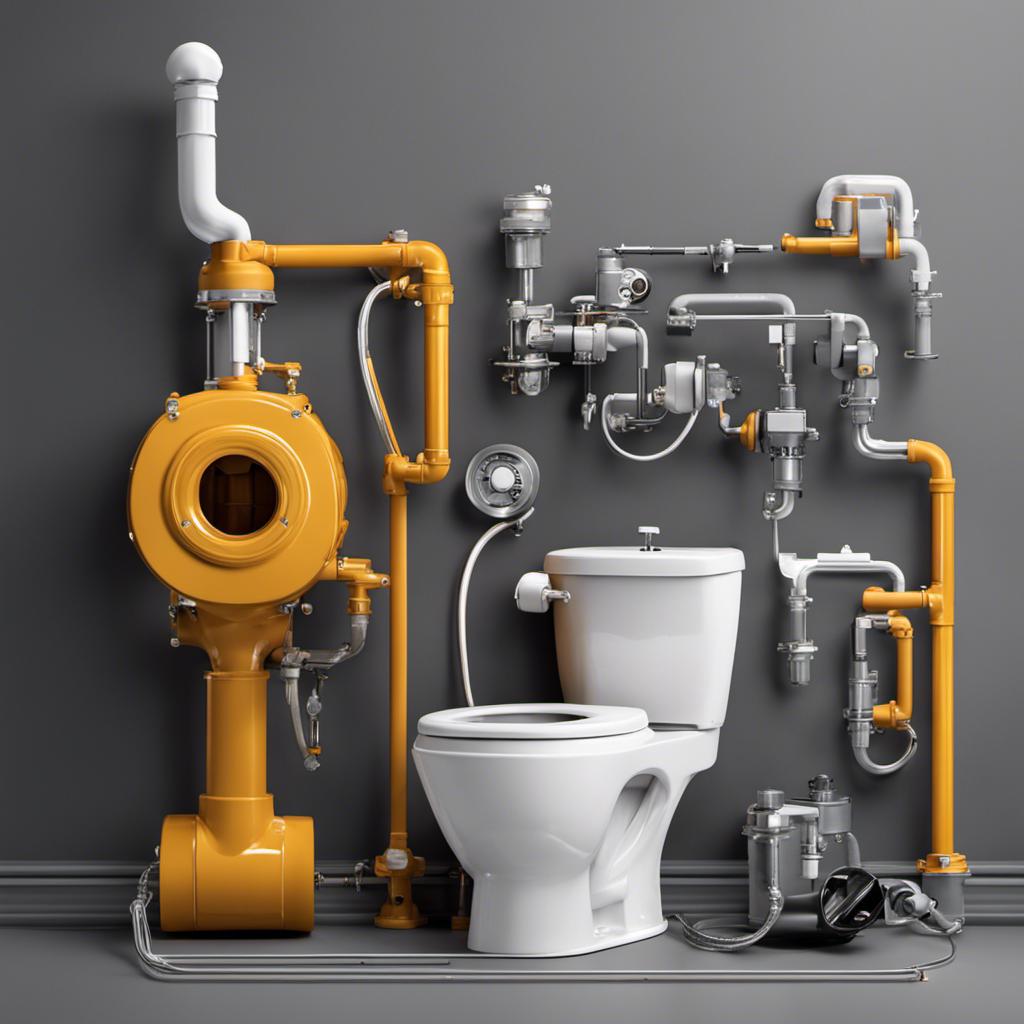As a homeowner, I’ve encountered my fair share of household problems. One particular issue that can be quite frustrating is a running toilet. It’s not just the annoying sound that gets to me, but also the wasted water and the impact on my utility bill.
That’s why I’ve taken the time to research and learn how to stop a toilet from running. In this article, I will share with you some practical and effective solutions to fix this common plumbing problem.
Key Takeaways
- A running toilet is usually caused by a problem with the flapper or the fill valve.
- Checking and troubleshooting the toilet flapper is important to identify any damage or wear.
- Flapper replacement can help resolve issues with water leakage if properly aligned and sealed.
- Toilet flush valve problems may also contribute to continuous water leakage and should be inspected and repaired if necessary.
Identifying the Cause of a Running Toilet
To identify the cause of a running toilet, you should start by checking the flapper and the fill valve. A running toilet is typically caused by either a problem with the flapper or an issue with the fill valve.
First, inspect the flapper for any signs of wear or damage. If the flapper is worn out or not sealing properly, it can lead to water leakage from the tank into the bowl.
Next, check the fill valve for any water pressure issues. If the fill valve is not functioning correctly, it may not be allowing enough water into the tank, causing the toilet to continuously run as it tries to fill up.
Checking the Toilet Flapper for Issues
When it comes to troubleshooting flapper replacements and toilet flush valve problems, there are a few key points to consider.
Firstly, it is important to ensure that the flapper is properly aligned and seated on the flush valve.
Secondly, check for any signs of damage or wear on the flapper, such as cracks or warping, as this can affect its ability to create a watertight seal.
Lastly, if the flapper replacement doesn’t solve the issue, it may be necessary to inspect the toilet flush valve for any blockages or malfunctions that could be causing the problem.
Flapper Replacement Troubleshooting
You can check if the flapper is properly aligned and adjust it if necessary.
Flapper replacement tips can help you troubleshoot common toilet flapper issues.
One common issue is when the flapper doesn’t fully seal the flush valve, causing water to continuously leak into the toilet bowl.
To fix this, turn off the water supply valve and flush the toilet to drain the tank.
Remove the old flapper by disconnecting it from the flush chain and removing the mounting ears from the overflow tube.
Install the new flapper by sliding the mounting ears onto the overflow tube and attaching the flush chain.
Ensure the flapper is properly aligned over the flush valve opening and turn the water supply back on.
Test the toilet to see if the flapper is sealing properly.
If not, make adjustments as needed to ensure a tight seal.
Toilet Flush Valve Problems
If the flush valve is not sealing properly, it may be causing water to continuously leak into the toilet bowl. This is one of the common toilet flush valve problems that can lead to a running toilet.
To fix this issue, you may need to repair the toilet flush handle. The flush handle is connected to the flush valve and controls the release of water into the bowl. Over time, the handle may become loose or damaged, resulting in a faulty seal and water leakage.
To repair the handle, you can start by removing the tank lid and inspecting the handle mechanism. If there are any loose or broken parts, you can replace them with new ones. Additionally, make sure to tighten any loose connections to ensure a proper seal.
Adjusting the Water Level in the Toilet Tank
To adjust the water level in the toilet tank, simply locate the float and turn the adjustment screw clockwise to lower the water level or counterclockwise to raise it.
Proper toilet tank maintenance is crucial for ensuring the efficient operation of your toilet and conserving water. By making water-saving toilet adjustments, you can reduce your water consumption and contribute to environmental conservation efforts.
Adjusting the water level in the toilet tank is one such adjustment. When the water level is too high, it can lead to constant running or leaking of the toilet. By lowering the water level, you can prevent water waste and potential damage to the toilet components.
Conversely, raising the water level can help improve the flushing power if it is weak. Remember, a well-maintained toilet tank not only saves water but also prevents unnecessary expenses and inconvenience.
Fixing a Faulty Fill Valve in the Toilet
When the toilet tank’s fill valve is faulty, it can cause continuous water flow, leading to water leakage and increased water bills. To fix this issue and stop the toilet from running, follow these steps:
-
Turn off the water supply: Locate the shut-off valve behind the toilet and turn it clockwise to stop the water flow.
-
Adjust water pressure: Use a screwdriver to turn the adjustment screw on the fill valve clockwise to decrease the water pressure.
-
Replace the fill valve cap: If the fill valve cap is damaged or loose, replace it with a new one to ensure a proper seal.
Replacing the Toilet Flush Valve
Replacing the toilet flush valve can effectively resolve issues with water leakage and continuous water flow in the toilet. Toilet flush valve maintenance is an important part of keeping your toilet functioning properly. Over time, the flush valve can become worn or damaged, leading to problems such as water leaks or a toilet that won’t stop running. Troubleshooting common toilet flush valve problems involves checking for any visible signs of damage or wear, such as cracks or corrosion. If you notice any issues with the flush valve, it may be necessary to replace it.
To replace the flush valve, start by turning off the water supply to the toilet and flushing the toilet to drain the tank. Remove the old flush valve by disconnecting it from the water supply line and unscrewing it from the toilet tank. Install the new flush valve by following the manufacturer’s instructions, making sure all connections are secure. Once the new flush valve is in place, turn the water supply back on and test the toilet to ensure it is working properly.
Regular maintenance and prompt replacement of a faulty flush valve can help prevent water wastage and keep your toilet running smoothly.
Seeking Professional Help for Persistent Running Toilet Issues
If you’re struggling with a toilet that continues to run, it might be time to seek professional help. While there are some DIY solutions you can try, persistent running toilet issues often require the expertise of a professional plumber.
Here are a few reasons why calling a professional plumber is a good idea:
-
Experience and Expertise:
Plumbers have the knowledge and experience to diagnose the root cause of the problem accurately. They are trained to handle various toilet models and can quickly identify any underlying issues. A professional plumber can provide a long-term solution to prevent future running toilet problems. -
Proper Equipment:
Plumbers have access to specialized tools and equipment required to fix complex toilet issues effectively. They can efficiently repair or replace faulty components, such as flappers, fill valves, or flush valves. -
Time and Cost Efficiency:
Hiring a professional plumber can save you time and money in the long run. They can quickly identify and fix the problem, preventing further damage or costly repairs.
While DIY solutions can help with minor issues, consulting a professional plumber is crucial for persistent running toilet problems.
Conclusion
In conclusion, fixing a running toilet can be a simple DIY task if you follow the right steps. By identifying the cause, checking the flapper, adjusting the water level, fixing the fill valve, or replacing the flush valve, you can successfully stop the toilet from running.
Remember, ‘A stitch in time saves nine,’ so it’s always best to address the issue promptly to avoid further damage and save yourself from expensive repairs.
If the problem persists, don’t hesitate to seek professional help.
